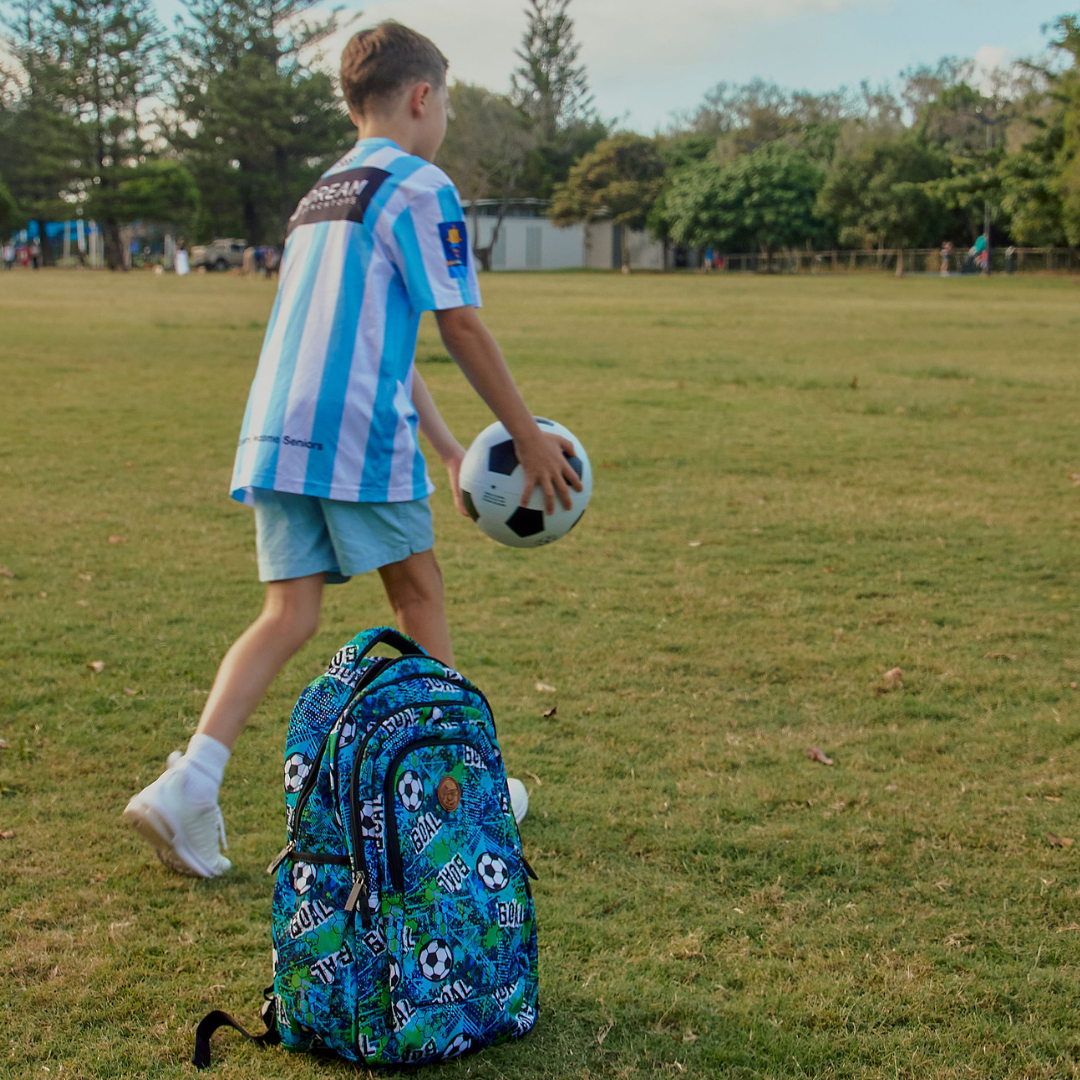Backpack Safety Tips: Protecting Your Child's Posture and Health
Backpacks are an essential part of a child's school life, providing a convenient way to carry books, supplies, and personal items. However, improper use of backpacks can lead to various health issues, including poor posture, back pain, and even long-term spinal problems. As parents and caregivers, it's crucial to prioritise your child's health and well-being by ensuring they use backpacks safely and ergonomically.
In this blog, we explore some valuable backpack safety tips to help protect your child's posture and overall health.
- Choose the Right Backpack:
Start by selecting a backpack that's appropriate for your child's age, size, and needs. Look for the following features:
- Size: Select a backpack that's proportionate to your child's body size. The backpack should not be wider or longer than your child's torso.
- Weight: A loaded backpack should not weigh more than 10-15% of your child's body weight. Distribute the weight evenly across the backpack's compartments.
- Adjustable Straps: Choose a backpack with padded and adjustable shoulder straps. The straps should be wide enough to distribute weight without digging into the shoulders.
- Padded Back: A padded back panel provides extra comfort and protection against sharp objects inside the backpack.
- Pack Wisely:
Teaching your child how to pack their backpack properly can make a significant difference in their posture and comfort:
- Heavier Items Closest to the Back: Place heavier items like books and laptops closest to your child's back to prevent them from pulling backward.
- Use Compartments: Utilize the backpack's compartments to evenly distribute weight and prevent items from shifting.
- Minimise Unnecessary Items: Encourage your child to only pack what they need for the day to avoid overloading the backpack.
- Clean Regularly: Periodically clean out the backpack to remove unnecessary items. A clutter-free backpack not only reduces weight but also helps maintain an organised and balanced load.
- Wear It Correctly:
Proper wearing of the backpack is essential for maintaining good posture and reducing strain:
- Both Straps On: Make sure your child wears both shoulder straps, and they should be adjusted to fit snugly but not too tightly.
- Adjust the Straps: Regularly check and adjust the shoulder straps to accommodate any growth spurts or changes in clothing thickness.
- Positioning: The backpack should sit comfortably on the middle of the back, not sagging too low or hanging too high.
- Be Mindful of Health Signals:
Teach your child to recognize signs of discomfort or strain that might indicate the backpack is causing issues:
- Pain: If your child complains of back, neck, or shoulder pain, address the issue promptly and consider lightening the backpack load.
- Posture Changes: Watch for changes in your child's posture, such as hunching or leaning forward, which could be a sign of backpack-related strain.
- Encourage Physical Activity and Strong Posture:
Regular physical activity, including exercises that promote core strength and posture, can help counteract the effects of carrying a backpack:
- Encourage Exercise: Engage your child in activities that strengthen their back, core, and shoulder muscles.
- Emphasize Posture: Teach your child about the importance of maintaining good posture while sitting, standing, and walking.
Prioritising backpack safety is essential for safeguarding your child's posture and overall health. By selecting the right backpack, packing it wisely, wearing it correctly, staying mindful of health signals, and promoting physical activity, you can significantly reduce the risk of posture-related issues and discomfort. As a parent or caregiver, your proactive efforts will go a long way in ensuring your child's well-being as they navigate their school years with a healthy back and confident posture.






